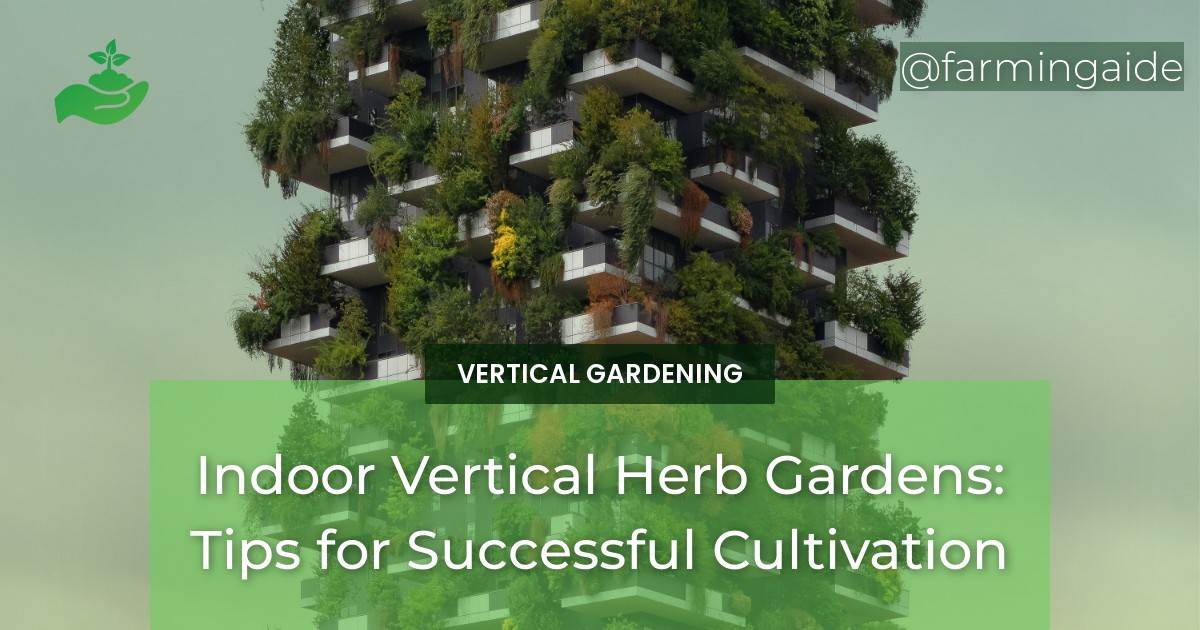Welcome to the world of indoor vertical herb gardening! This innovative and sustainable gardening practice has gained popularity in recent years, allowing individuals to grow their own fresh herbs in limited spaces. Not only does it provide a convenient and accessible source of herbs for cooking and medicinal purposes, but it also adds a touch of greenery to any indoor space. From selecting the right herbs to designing and maintaining your garden, this comprehensive article will cover all the necessary information to help you create a thriving vertical herb garden. Let’s get started!
Table of Contents
Selecting the Right Herbs
When it comes to indoor herb gardening, it is important to choose the right herbs that will thrive in your specific environment. Here are some factors to consider when selecting herbs for your indoor vertical garden:
Climate Considerations
Understanding the preferred climate of different herbs is crucial for their successful cultivation. Some herbs, such as basil and parsley, prefer warm and humid conditions, while others like rosemary and thyme thrive in drier and cooler environments. Consider the climate of your region and choose herbs accordingly.
To create the ideal microclimate for your herbs in an indoor vertical garden, you can use a humidifier or mist the plants regularly. You can also group herbs with similar climate preferences together to create a more suitable environment for them.
Space Requirements
One of the main advantages of indoor vertical herb gardening is its ability to maximize space. When choosing herbs for your garden, consider those that are suitable for small spaces, such as chives, mint, and oregano. You can also opt for compact varieties of herbs that are specifically bred for indoor cultivation.
To optimize space in your vertical herb garden, you can use hanging planters, wall-mounted shelves, or a tiered structure. This not only saves space but also adds visual interest to your indoor space.
Designing an Indoor Vertical Herb Garden
Now that you have selected the right herbs for your indoor vertical garden, it’s time to design it. Here are some key elements to include in your vertical herb garden:
ALSO READ
Placement and Positioning
When it comes to indoor herb gardening, proper placement and positioning of your herbs are crucial for their growth and development. Choose a location that receives ample sunlight, preferably near a window. If natural light is limited, you can use grow lights to supplement the light requirements of your herbs.
Position your herbs in a way that allows for proper air circulation and prevents overcrowding. This will also help in preventing the spread of pests and diseases.
Watering and Drainage
Choosing the right watering system for your vertical herb garden is important to ensure that your herbs receive the right amount of water. You can use a drip irrigation system, self-watering containers, or hand-watering with a watering can. Make sure to water your herbs regularly, but avoid overwatering as it can lead to root rot.
Proper drainage is also essential for the health of your herbs. Make sure your containers have drainage holes and use a well-draining potting mix. You can also add a layer of gravel or pebbles at the bottom of your containers to improve drainage.
Maintenance Tips
To keep your indoor vertical herb garden thriving, here are some general care and maintenance tips:
– Regularly check for pests and diseases and take necessary measures to prevent and control them.
– Use organic and sustainable gardening practices, such as companion planting and natural pest control methods, to maintain a healthy and balanced ecosystem in your garden.
– Ensure that your herbs receive proper nutrients by using organic fertilizers or compost.
ALSO READ
Pruning and Harvesting
Pruning is an important aspect of herb gardening as it promotes healthy growth and prevents the plants from becoming leggy. Regularly trim your herbs to encourage bushier growth and remove any dead or damaged leaves.
Harvesting your herbs at the right time is crucial for their flavor and potency. Different herbs have different harvesting methods, so make sure to research and follow the correct techniques for each herb in your garden.
Seasonal Considerations
As with any type of gardening, seasonal changes should also be taken into consideration for indoor vertical herb gardens. Plan ahead for seasonal changes and adjust your gardening practices accordingly. You can also practice crop rotation to ensure continuous herb production and prevent soil depletion.
What are the Key Tips for Successful Indoor Vertical Herb Garden Cultivation?
Indoor vertical herb gardens are a great way to grow herbs in small spaces. To ensure successful cultivation, provide adequate light, use well-draining soil, and water carefully. Regular pruning and fertilizing will promote healthy growth. Additionally, closely monitor for pests and diseases to maintain a thriving indoor herb garden.
Conclusion
Indoor vertical herb gardening is a fun and rewarding way to grow your own fresh herbs at home. By selecting the right herbs, designing an efficient garden, and following proper maintenance practices, you can create a thriving vertical herb garden in any indoor space. Remember to consider climate, space, and design elements when planning your garden, and don’t forget to regularly prune and harvest your herbs for optimal growth. With these tips and recommendations, you can enjoy a sustainable and bountiful indoor herb garden all year round. Happy gardening!
RELATED ARTICLES:


